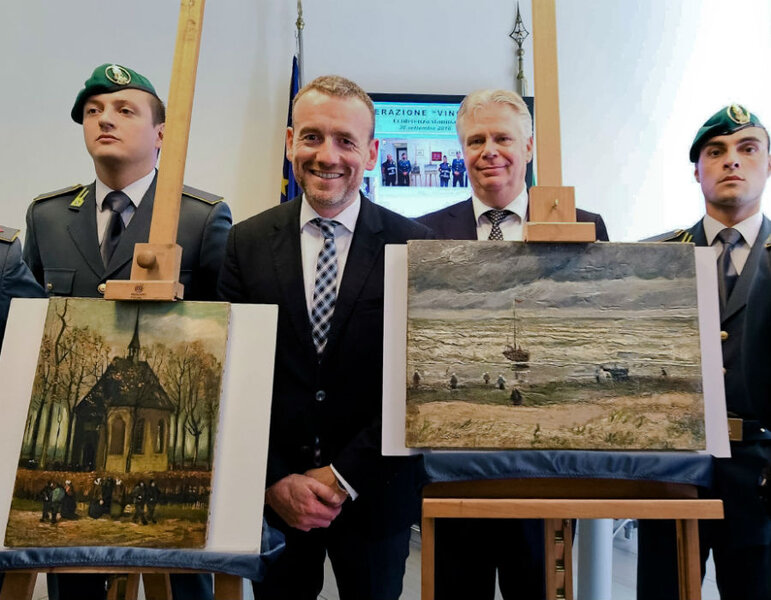Van Gogh paintings recovered 14 years after theft
Loading...
In a long-awaited victory for the art community, Italian investigators announced on Friday that they have recovered two paintings by influential impressionist painter Vincent Van Gogh, 14 years after they were stolen from a Dutch art museum in what the FBI described as one of the top ten art crimes.
Found in a farmhouse in Naples, the two paintings were shown to the public at a news conference on Friday. The curator who inspected the works earlier in the week concluded, “They are the real paintings!”, according to a statement by the Van Gogh Museum in Amsterdam, the paintings' home before the theft.
A person who was present at the scene “didn’t say a word” about how they ended up there, said Financial Police Col. Giovanni Salerno. But investigators believe there is a connection between the paintings and a drug trafficking ring operated by gangsters from the Camorra crime syndicate. In January, 11 members of this ring were arrested, and one agreed to testify for the state. Information uncovered during that investigation helped investigators find the paintings.
“The paintings have been found! That I would be able to ever pronounce these words is something I had no longer dared to hope for,” Axel Rüger, the director of the Van Gogh Museum, said in the museum’s statement. He expressed his gratitude to Italian authorities for their role in recovering the paintings after so many years.
The paintings are part of an ongoing investigation regarding the involvement of the Camorra, in particular Raffaele Imperiale, who owned the farmhouse where the paintings were found. Police seized 20 million euros ($22 million) of assets – including properties, boats, and bank accounts – from Mr. Imperiale, who is now believed to be a fugitive in Dubai, and fellow drug kingpin Mario Cerrone.
Whether the Camorra were the original thieves or became involved later on is unclear. Mr. Salerno explained that their involvement was likely an effort to invest their “enormous profits” from drug trafficking in a new commodity.
During the 2002 theft, the thieves broke into the museum through the roof. They stole the works from the main exhibition hall, where dozens of Van Gogh paintings were displayed, before exiting the building by sliding down a rope.
Two men were caught and convicted following the crime, thanks to DNA evidence linking them to the scene, but the whereabouts of the paintings remained unknown until a few days ago. Italian Prime Minister Matteo Renzi informed Dutch Prime Minister Mark Rutte about the police operation to recover the paintings before the funeral of former Israeli leader Shimon Peres, a source in Mr. Renzi’s office told Reuters.
The two paintings, each of which is worth around 50 million euros ($56 million), are from relatively early in Van Gogh’s career. “Seascape at Scheveningen” (1882) is one of just two seascapes the artist painted in the Netherlands, and contains grains of sand from the beach that were blown onto the canvas by the wind while he was working.
“Congregation leaving the Reformed Church in Nuenen” (1884/1885) was painted by Van Gogh for his mother. It depicts the congregants of the church where his father was the pastor.
Both paintings have been removed from their frames, and the seascape has some paint chipped off in the bottom left corner. The church scene has minor damages to the edge of the canvas.
“Additional research by a conservator should determine the exact condition of the two paintings,” Mr. Rüger said.
The paintings are expected to be returned to the Van Gogh Museum after the Italian police investigation concludes.
This report contains material from Reuters and the Associated Press.






